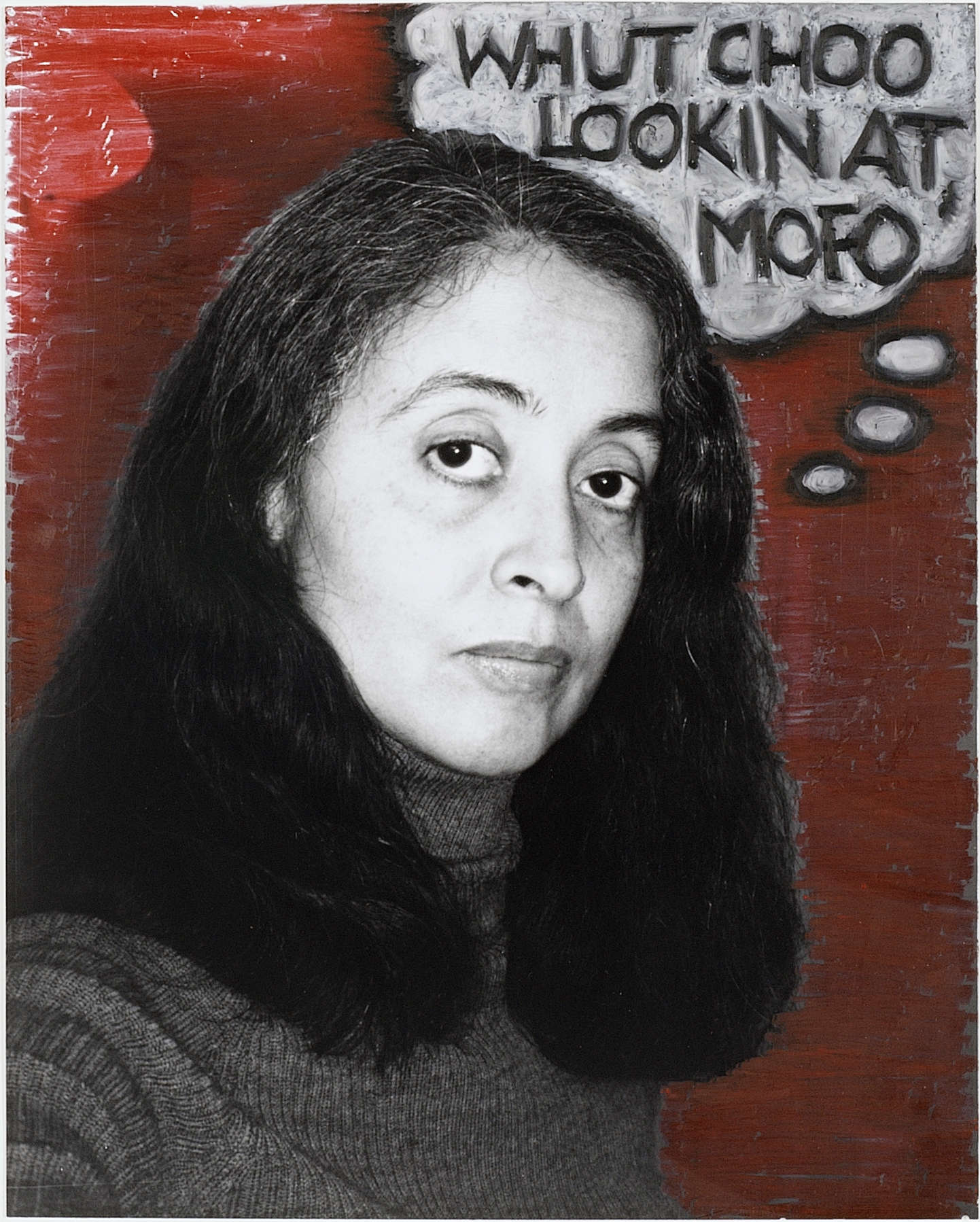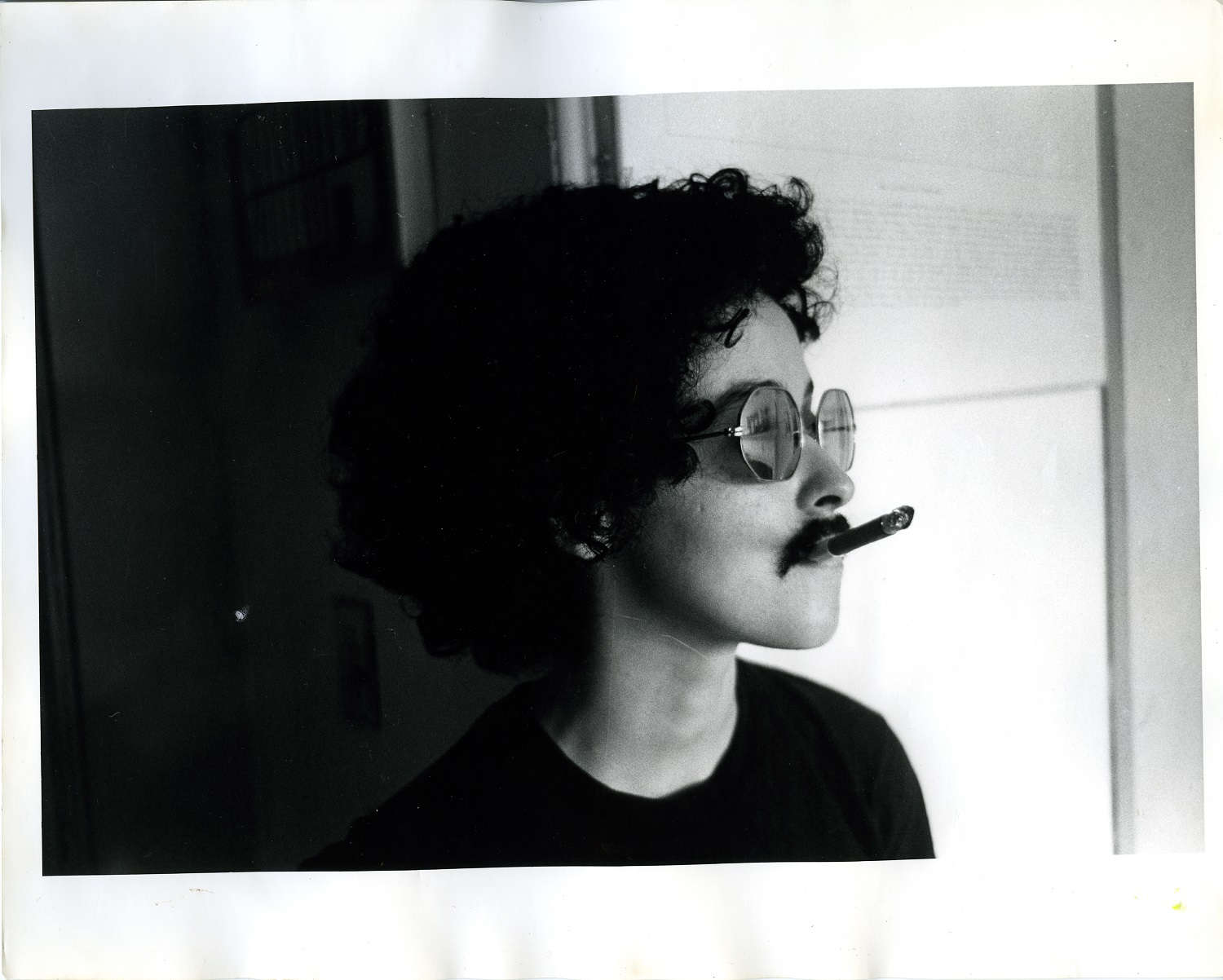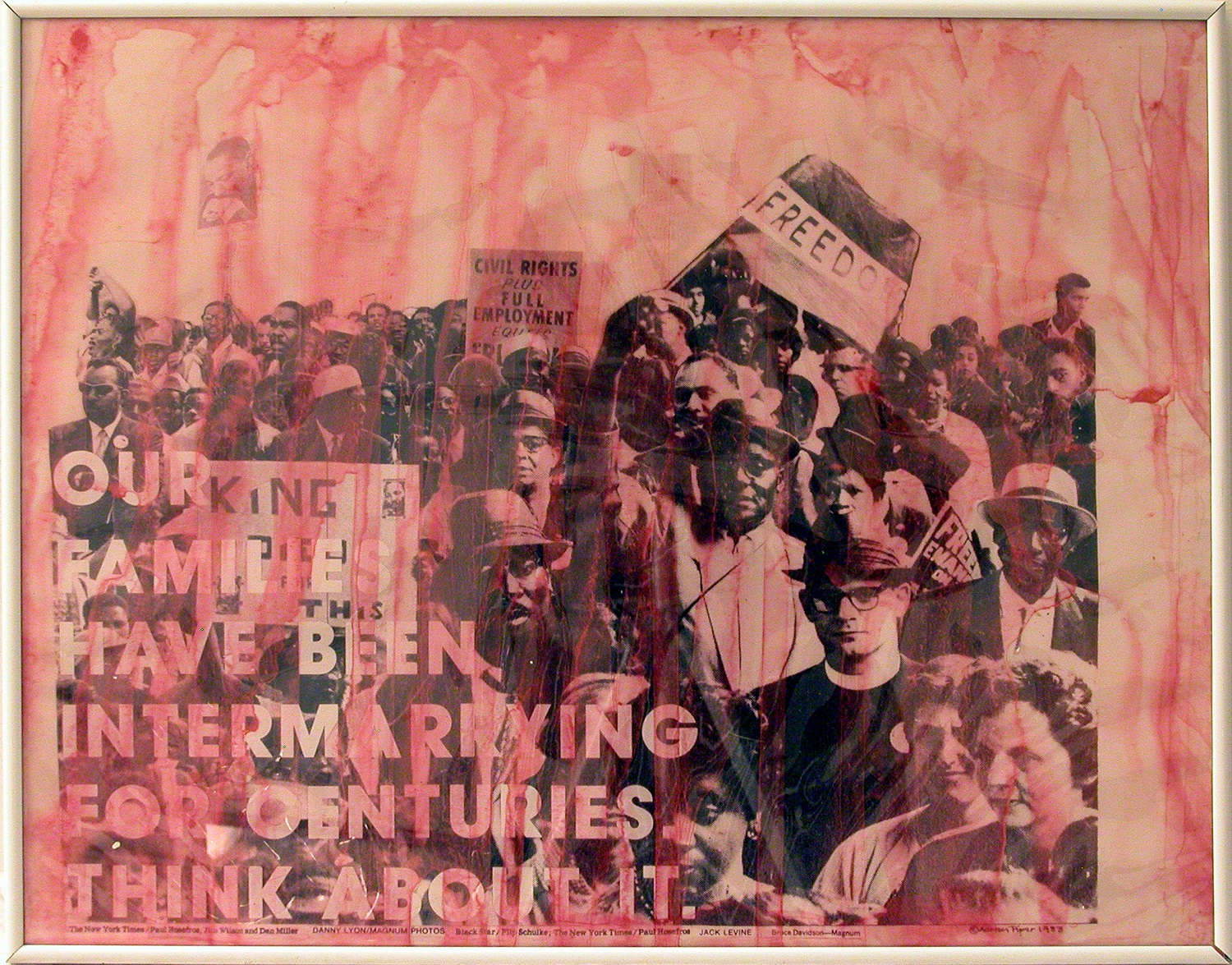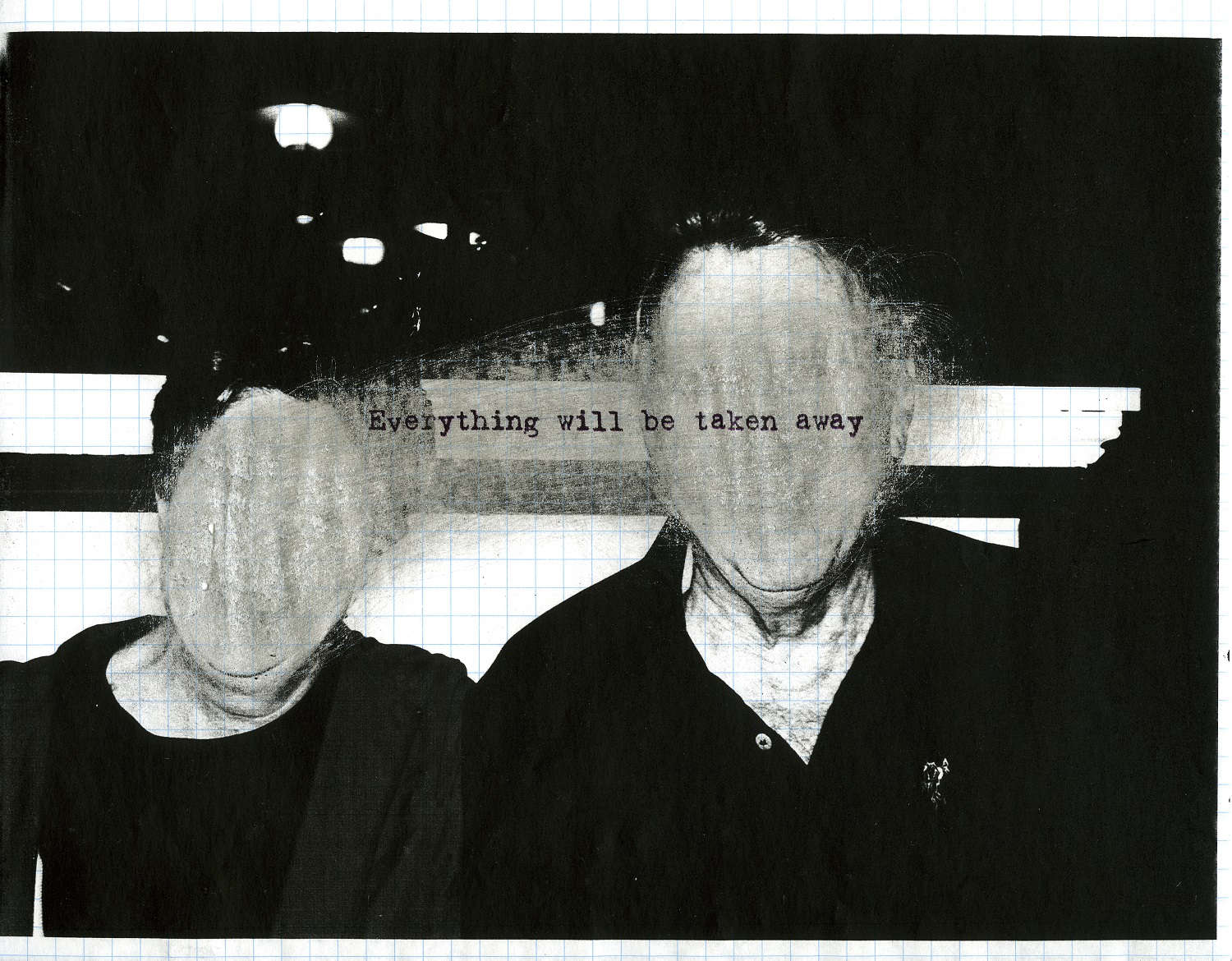Major exhibition in Milan on Adrian Piper, the artist who challenged conventions of race and gender
From March 19 to June 9, PAC Padiglione d’Arte Contemporanea in Milan presents Race Traitor, the first European retrospective dedicated to artist Adrian Piper (New York, 1948) in more than two decades. Promoted by the City of Milan and produced by PAC with Silvana Editoriale, the exhibition is curated by Diego Sileo and is one of the main moments of Milano Art Week (April 8 - 13, 2024), a widespread event coordinated by the City of Milan in collaboration with miart. Race Traitor offers a comprehensive overview of Adrian Piper’s career, spanning more than sixty years. The exhibition features major international loans from such prestigious museums as MoMA and the Guggenheim in New York, MoMA San Francisco, MCA Chicago, MOCA Los Angeles, and Tate Modern in London.
Adrian Piper, winner of the Golden Lion for Best Artist at the 2015 Venice Biennale, established herself as a conceptual, minimalist and performance artist in the New York art scene of the late 1960s. Her works raise fundamental questions about politics, racial and gender identity, pushing people to confront uncomfortable truths about themselves and society. Central to her philosophical, artistic and activist practice is the ongoing struggle against racism, xenophobia, social injustice and hatred. The Race Traitor exhibition is the result of research and investigative work that began in 2019, placing PAC at the center of the international art scene. More than one hundred works, including installations, videos, photographs, paintings and drawings, make up this exhibition, highlighting the analysis of the “visual pathology” of racism and the image of African American people determined by society and the many widespread stereotypes. Adrian Piper, through his long artistic career, has addressed complex issues related to “race” and gender, interweaving them with the formal practices of minimal and conceptual art. This combination of aesthetics and social issues has made her artistic production a double-edged sword, as it not only aims to combat American racism, but also to emancipate herself and her identity from the constraints of "race."


As a woman and philosopher, Piper also faced the challenges of sexism and misogyny, experiences that profoundly influenced her work and inspired numerous contemporary women artists. Her impact in the contemporary art world goes beyond the works themselves, representing an invitation for reflection on crucial issues in contemporary society. Her artistic exploration begins with the LSD paintings, figurative works dating from her youth that testify to her desire to peer beyond the surface of things. This quest for depth was fueled by his passion for Vedic philosophy, meditation and yoga, which helped shape his artistic vision.
Through works such as LSD Self-Portrait from the Inside Out, Piper expresses his deep concentration on the subject, which leads to the fragmentation of surfaces and the creation of new visual perspectives. His artistic production is set in the context of the counterculture of the 1960s, a period characterized by fervent social and political debate. Political awareness became central in Piper’s public performances, as evidenced by Five Unrelated Time Pieces (Meat into Meat) from 1969, which explores the contradictions of a society based on consumerism and the use of meat as food. This work, which began as a private performance, is transformed into a public reflection on the relationship between the individual and society. Untitled Performance at Max’s Kansas City, made in 1970, represents a further step forward in Piper’s performance practice. In this performance, the artist isolates himself from his surroundings, seeking to interact with an audience not necessarily prepared for conceptual art. His presence becomes a catalyst for audience reactions, challenging the social and cultural conventions of the time.
The 1975 performance entitled Some Reflected Surfaces marks a turning point in Adrian Piper’s work, introducing dance as a key element of his artistic research. In the informal setting of the student lounge of Harvard’s philosophy department, the artist presents a transgender version of his male alter ego, known as The Mythic Being, characterized by a mustache, wig and sunglasses. The goal of this performance is to explore the experiences of a person with a genetic history similar to Piper’s, but with a different appearance and gender. The Mythic Being becomes a recurring element in Piper’s subsequent works, continuing to explore the complexities related to identity and self-representation.
With the 1976 installation Art for the Art World Surface Pattern, political engagement becomes a central element in Piper’s artistic practice. Within a minimalist environment, the artist papered the walls with images from newspapers documenting various atrocities around the world, superimposing the provocative words “Not a Performance.” Through this installation, Piper criticizes the art world’s indifference to global injustices, inviting viewers to reflect on their role as passive observers of such events. In 1989, Piper created Cornered, a work that challenges conventions regarding the classification of identity. Through a recorded monologue, the artist explores the complex mechanisms associated with racial determination and the history of mestizaje, questioning predefined categories of identity and belonging.
In 1991, the U.S. press focused on the case of Anita Hill, a prominent African American lawyer who accused Clarence Thomas, an African American judge, of sexual harassment during hearings for the U.S. Supreme Court. This case, which raised issues of race and gender, was one of the events that contributed to the third wave of the international feminist movement. Piper reinterprets this event in her 1992 series Decide Who You Are , superimposing Hill’s photograph as a child with censorious comments, highlighting the way victims can be treated by the public. The environmental installation What It’ s Like, What It Is #3, also presented in the exhibition, offers a reflection on stereotypical identities and public perceptions of African American people. In the aseptic environment of an exhibition hall, Piper places a video of an African American man confined in a box, debunking a number of stereotypes about his identity and inviting viewers to consider the complexities of social representation.


The 2018 photographic series Race Traitor uses Piper’s portrait superimposed on provocative phrases, mocking the belief that a person’s outward appearance can define his or her identity. The 2018 installation Das Ding-an-sich bin ich, inspired by the Kantian noumenon, invites the audience to explore reality beyond sensory appearances. Through mirrored-walled parallelepipeds and voices emerging from them, Piper explores the complexity of individual identity and perception.
The exhibition, made possible through the support of Tod’s and Limonta, also includes two publications edited by Silvana Editoriale. In addition, during Milan Art Week, PAC presents the talk Being alone with the art of Adrian Piper, with Vid Simoniti, who analyzes the theme of isolation in Piper’s artistic practice.
Born in New York in 1948, Adrian Piper is known for her political and philosophical engagement. After embracing conceptual art in the 1960s, he integrated performance and dance into his artistic practice. In addition to her artistic career, Piper was the first African American woman to be awarded an academic chair in philosophy at Georgetown University. She currently lives and works in Berlin, where she wrote her autobiography Escape to Berlin: A Travel Memoir (2018), exploring the reasons for her move from America and questioning her social identity.
Hours: Tuesday through Sunday 10 a.m. to 7:30 p.m., Thursday 10 a.m. to 10:30 p.m., last admission one hour before. Closed Mondays. Open March 30, April 1 and 25, May 1 and June 2. Full ticket 8 euros, concessions 6.50, special concessions 4 euros.
 |
| Major exhibition in Milan on Adrian Piper, the artist who challenged conventions of race and gender |
Warning: the translation into English of the original Italian article was created using automatic tools. We undertake to review all articles, but we do not guarantee the total absence of inaccuracies in the translation due to the program. You can find the original by clicking on the ITA button. If you find any mistake,please contact us.




























